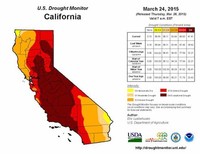Facts about Drought

Having adequate drought mitigation strategies in place can greatly reduce the impact.

Drought is a normal, recurring feature of the climate in most parts of the world.

Drought in India affecting the Ganges is of particular concern, as it provides drinking water and agricultural irrigation for more than 500 million people.

Paradoxically, some proposed short-term solutions to global warming also carry with them increased chances of drought.

Recurring or long-term drought can bring about desertification.

Drought is rarely if ever the sole cause of famine; socio-political factors such as extreme widespread poverty play a major role.

A July 2006 article reported Woods Hole Research Center results showing that the forest in its present form could survive only three years of drought.

Periods of drought can have significant environmental, economic and social consequences.

Recurring droughts in the Horn of Africa have created grave ecological catastrophes, prompting massive food shortages, still recurring.

Areas with populations that depend on subsistence farming as a major food source are more vulnerable to drought-triggered famine.

A drought is an extended period of months or years when a region notes a deficiency in its water supply.

Drought can also reduce water quality, because lower water flows reduce dilution of pollutants and increase contamination of remaining water sources.

In 2005, parts of the Amazon basin experienced the worst drought in 100 years.

India, China, Pakistan, Bangladesh, Nepal and Myanmar could experience floods followed by droughts in coming decades.